A car may function impeccably in all weather without any starting trouble for years. Then suddenly it gives up the ghost. Read in this guide what to do to start a car with a jump-start lead properly!
Defining the problem
If the car fails to start, jump-starting is not necessarily the right action. Not every breakdown is the same. Depending on how the malfunction appears, different underlying causes are at hand. These are the most typical cases:
| 1. The car does not react after turning the ignition key. 2. The dashboard lights up dimly. Turning the ignition key only causes a click or a faint starting sound of the engine. 3. The starter runs smoothly, but the car fails to ignite. |
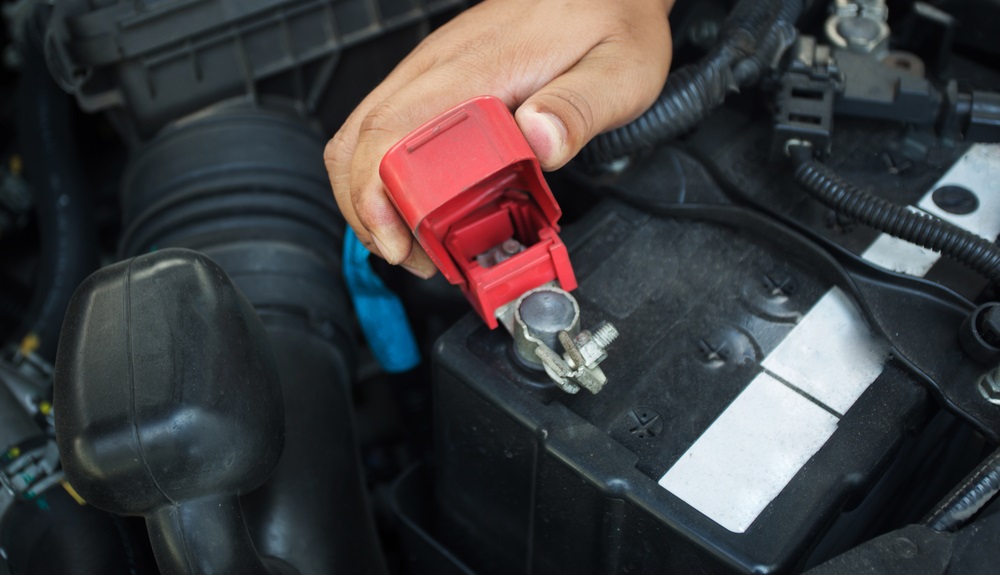 Case 1 can be the result of a deep discharge of the battery, generally only occurring when the car has been stationary for weeks or months. If the car was operational the previous day, at least the dashboard should light up faintly. If the car appears totally “dead”, another cause is more likely: the battery has been disconnected from the power circuit one way or another.
Case 1 can be the result of a deep discharge of the battery, generally only occurring when the car has been stationary for weeks or months. If the car was operational the previous day, at least the dashboard should light up faintly. If the car appears totally “dead”, another cause is more likely: the battery has been disconnected from the power circuit one way or another.
This may occur if a pole was disconnected, a cable was cut or in case of excessive corrosion of the earth cable. In this case, the cables should be checked first. Possibly, the red plus cable became disconnected, although this is more common for the black minus cable. If one of the cables hangs loose on the side of the battery, you have very probably already found the defect. If this is an older car, disconnect the black cable from the bodywork. Scour contact points on both sides and re-attach the cable. With a bit of pole grease the contact point is protected against further corrosion. If this doesn’t work, a defective fuse can be the cause. Prior to a jump start attempt, the fuses should be checked, otherwise the attempt might fail.
If this doesn’t work, a defective fuse can be the cause. Prior to a jump start attempt, the fuses should be checked, otherwise the attempt might fail.
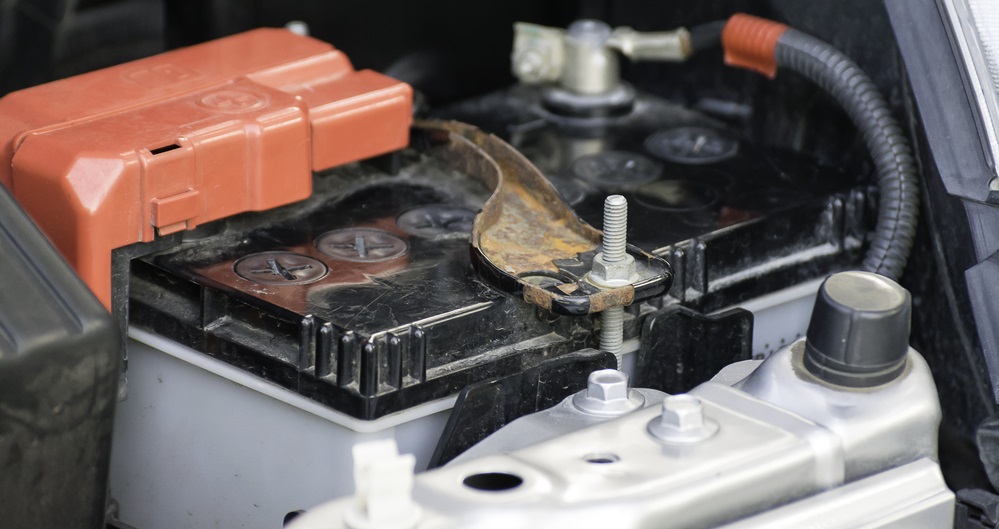 The 2nd case is the typical case of empty battery, although a corroded contact point on the earth cable cannot be excluded as a cause. Here, the traditional jump start should be attempted.
The 2nd case is the typical case of empty battery, although a corroded contact point on the earth cable cannot be excluded as a cause. Here, the traditional jump start should be attempted.
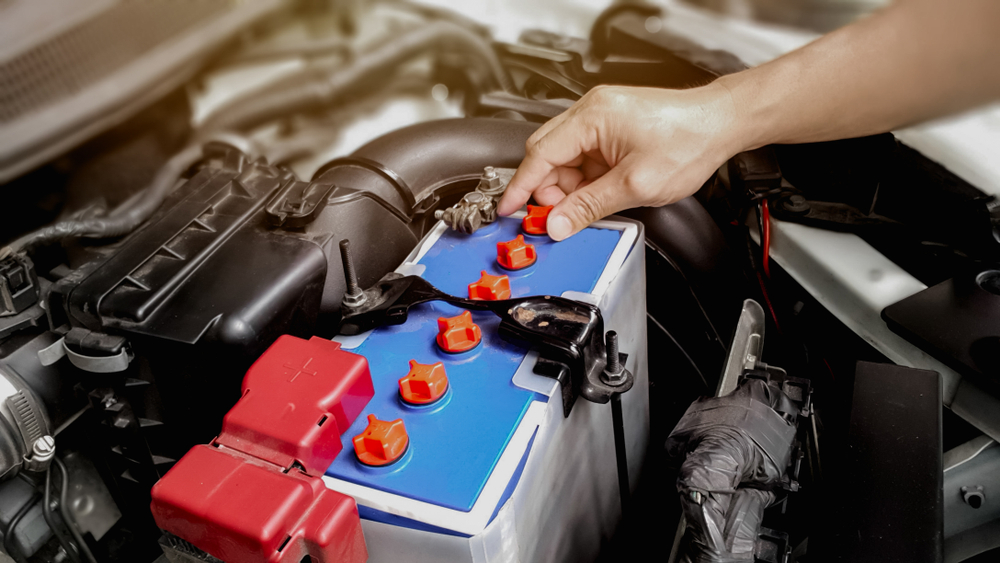 In case 3 the car is provided with sufficient power for the starter. Either it receives no fuel, no ignition spark or the pre-glow unit of the diesel engine is malfunctioning.
In case 3 the car is provided with sufficient power for the starter. Either it receives no fuel, no ignition spark or the pre-glow unit of the diesel engine is malfunctioning.
In petrol cars a look under the bonnet is often conclusive: if the ignition cable is not hanging where it should, you have found the cause. Due to the strong vibrations in an engine, the ignition cable can become disengaged. Simply re-attach it and the car should be able to start again. In diesel cars the glow-plug fuse is often defective. Its location can be found in the service manual. Check the unit and if necessary replace it. The self-igniting system should now function properly.
In diesel cars the glow-plug fuse is often defective. Its location can be found in the service manual. Check the unit and if necessary replace it. The self-igniting system should now function properly.
How to jump-start a car – step by step
The traditional cause of an empty battery is the forgotten light switch. A parking light can run down your battery in a matter of hours and prevent it from starting the car. Due to the intricate electronics in modern cars a jump-start is not entirely free of risk – for the supplying car as well. Therefore stick to the order described below to prevent costly damage.
| 1. Use the proper jump lead |
| 2. Connect the jump lead |
| 3. Start the engine |
| 4. Remove the jump lead |
| 5. Further measures |
1. The proper jump-start lead
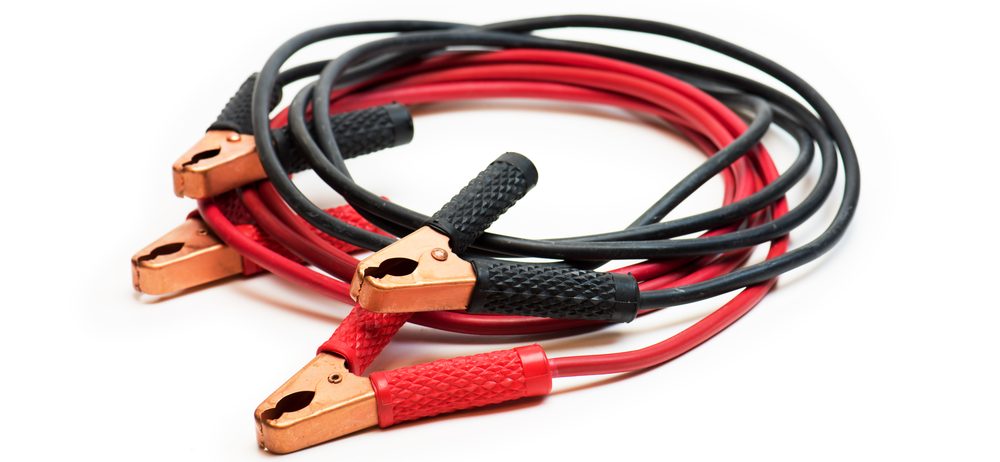 An inferior or feeble jump lead can burn out or cause severe damage to the electronics in both cars. An adequate cable has three distinctive qualities:
An inferior or feeble jump lead can burn out or cause severe damage to the electronics in both cars. An adequate cable has three distinctive qualities:
1. It is suitable for diesel cars (Diameter aluminium 25 mm² corresponds with diameter copper 16 mm²).
2. Clamps are fully insulated, have a strong “bite” and both contact surfaces are connected to the main cable.
3. The cable has surge protection.
Its most evident characteristic is its price: a high-grade, safe and user-ready jump lead starts at 50 EUR (± £44). Cheaper leads often burn out after 2 – 3 attempts. This specifically applies when attempting to jump start a diesel engine with a lead for a petrol car.
Quality clamps should have the following qualities:
– When closed, no bare metal is visible.
– The clamp can only be opened forcibly.
– Both contact surfaces of the clamp are connected to the main cable.
The surge protection is a small, black box in the centre of the cable, connecting the black and the red cable, often equipped with a light diode. This protection is particularly important for the supplying car. Power surges are effectively prevented and the electronics protected.
2. Connecting the jump-start lead
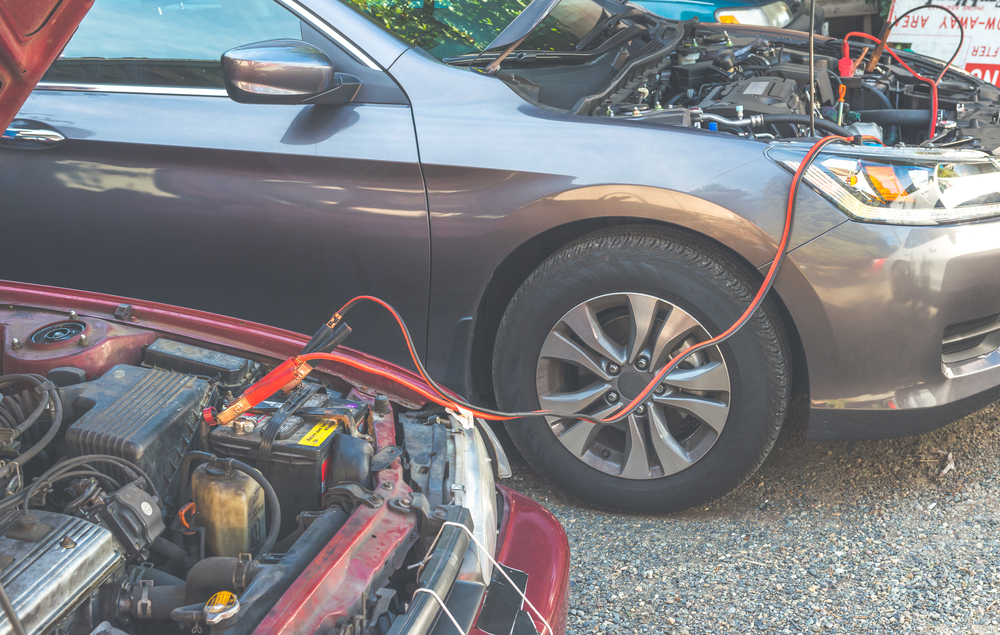 The jump-start lead is connected as follows:
The jump-start lead is connected as follows:
1. Park both cars side by side, enabling the red plus cable to connect one battery to the other.
2. Switch off engine and ignition, remove both battery pole covers.
3. Switch on the light of the receiving vehicle.
4. Connect plus poles of both cars with the red cable.
5. Close the power circuit with the black cable by connecting both car bodies.
| CAUTION! Explosion danger! The black cable should NOT be connected to the batteries’ minus poles, but to the earth points of both cars instead. Closing the electric circuit causes a slight spark rain at the minus pole. This must be kept at a distance from the battery. |
Suitable points are:
– the provided earth points (marked with (-))
– locks of the bonnet or car boot lid
– engine sub-frame
– bare metal points of the engine.
If the circuit is closed correctly, the lights of the receiving vehicle will light up or brighten significantly. Now you can be certain that the car can be started.
| CAUTION: Do not swap connections Faulty connection of leads, especially swapping poles causes severe damage to both cars. In the worst case, both batteries could explode! |
| CAUTION: Do NOT extend the jump-start lead On no account extend the jump-start leads by connecting the clamps of several consecutive leads. If the lead does not reach from one car to the other, the supplying car’s battery should be removed. |
3. Starting the engine
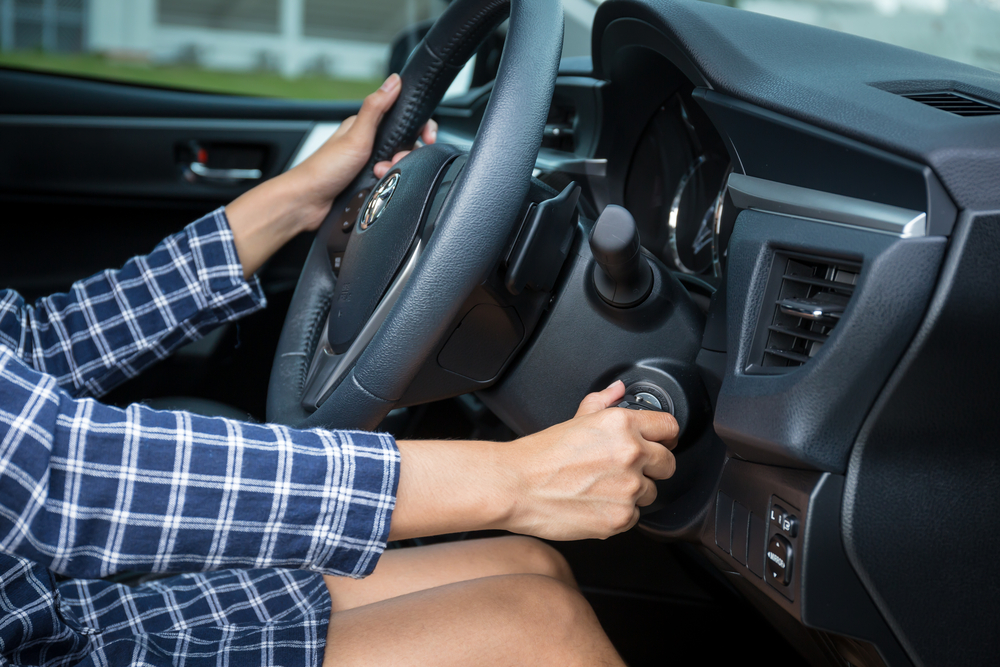 Prior to starting the engine, all power consumers must be switched off:
Prior to starting the engine, all power consumers must be switched off:
– light
– radio
– windshield wipers
– rear window heating
– seat heating
When all consumers are switched off, start the supplying car’s engine. Subsequently, the first starting attempt can be made.
| CAUTION: short attempts only Refrain from protracted starting attempts when jump-starting a car, which could strain even the best jump leads and burn them out. Better are several short attempts and checking if the problem can be defined after each failed attempt. |
4. Removing jump lead
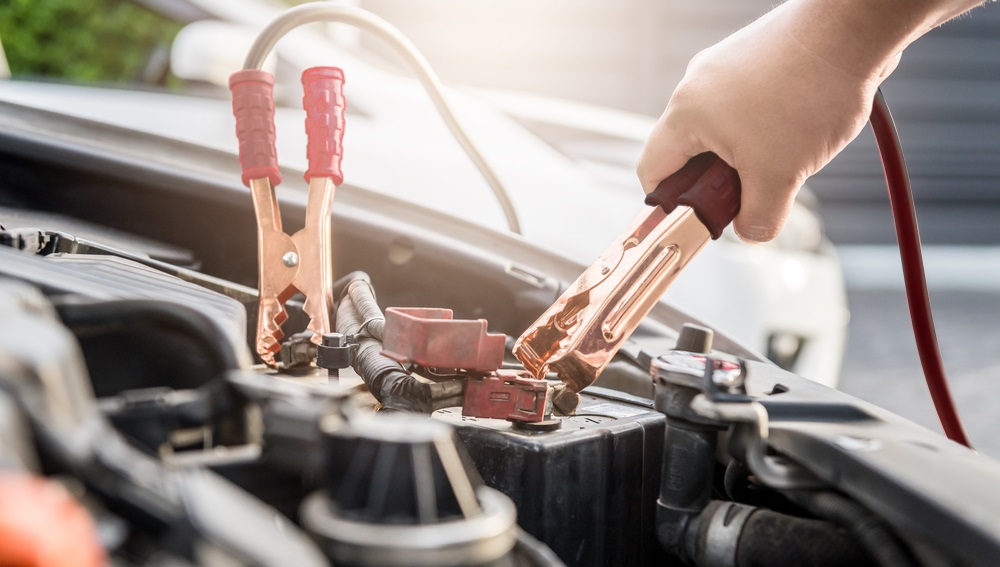 If both engines are running, first remove the minus cable, then the plus cable. The cables are stowed away safely and the protective covers installed on both batteries.
If both engines are running, first remove the minus cable, then the plus cable. The cables are stowed away safely and the protective covers installed on both batteries.
| CAUTION! Risk of fine Missing protective covers should be replaced as soon as possible. A fine is imposed for a lacking protective battery cover on occasion of a traffic control. This also applies to batteries which are not properly fixed! |
5. After jump-starting
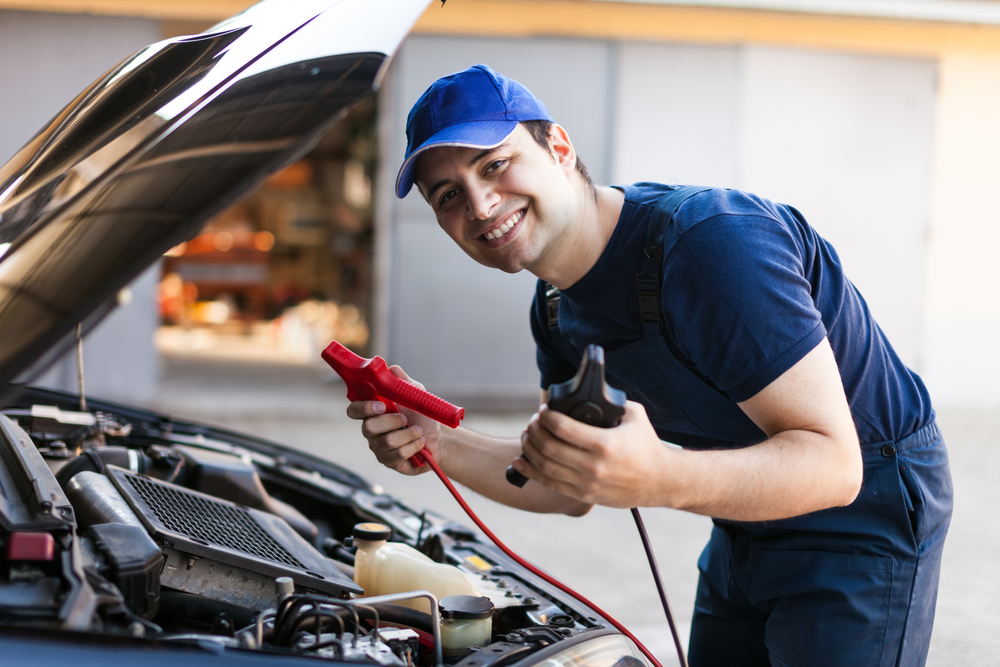 After jump-starting a car, its battery must be charged again. To do this, drive at least 30 – 45 minutes with no other consumers switched on.
After jump-starting a car, its battery must be charged again. To do this, drive at least 30 – 45 minutes with no other consumers switched on.
It is recommended to fully charge the battery with a deep-cycle battery charger at a car service point. Deep discharged batteries might have a defect, showing by a battery not being able to maintain the voltage and constantly discharging. Before this effect occurs, leaving you to depend on starting aid again, it is better to leave the car connected to a deep-cycle charger overnight. If this is not successful, the battery must be replaced.
For the future, only being alert helps: Never leave the car with lights or radio switched on!
Foto: Dmitry Kalinovsky, khonkangrua, pornanan nanthapornpisut, ilovephoto_KA, optimarc, Checubus, Pakpoom Phummee, Oyls, Minerva Studio / shutterstock.com

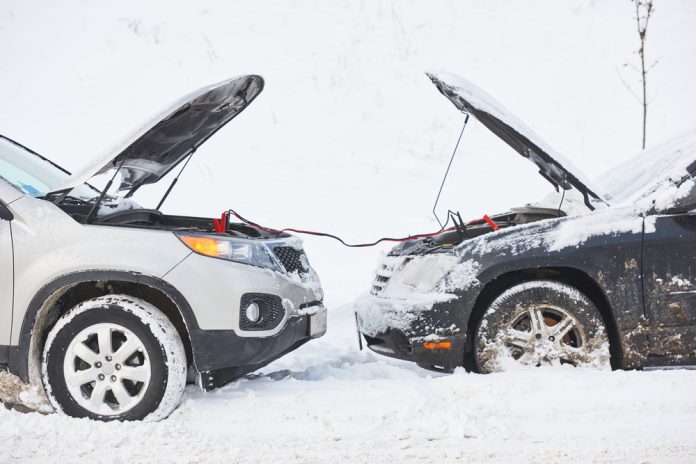


 (13 votes, average: 3.77 out of 5)
(13 votes, average: 3.77 out of 5)







